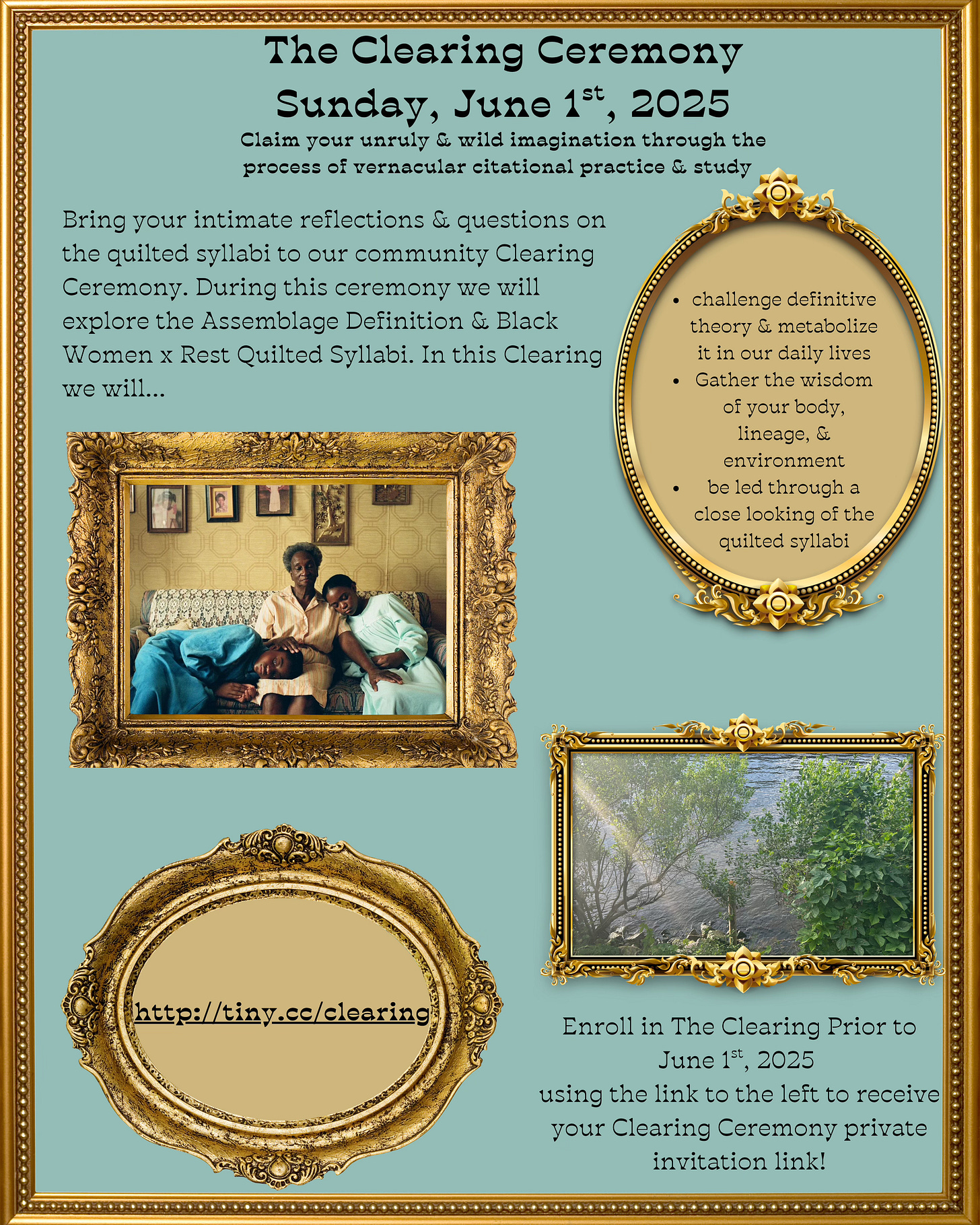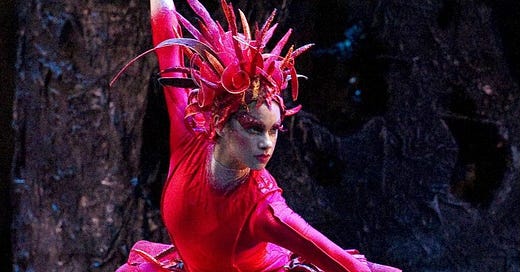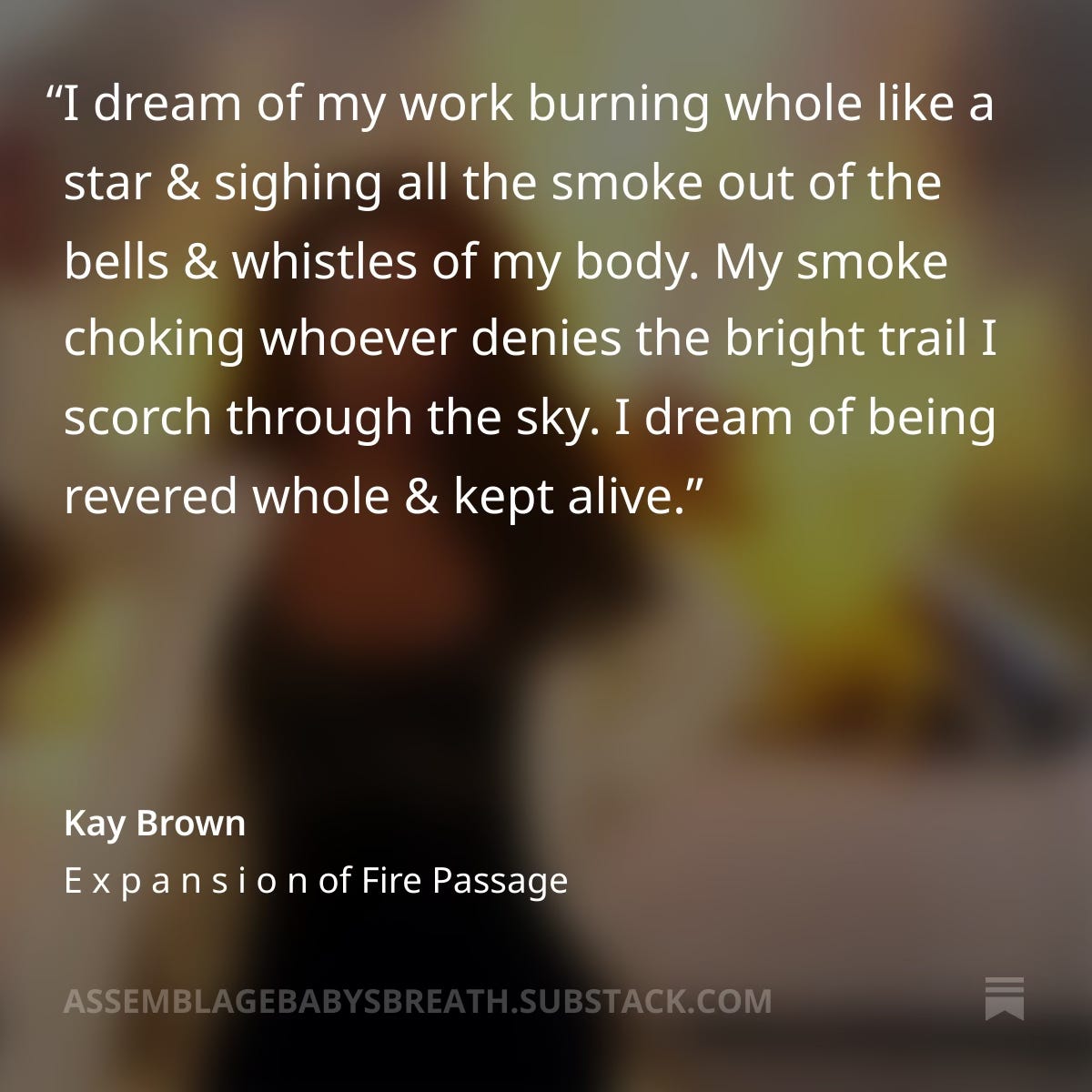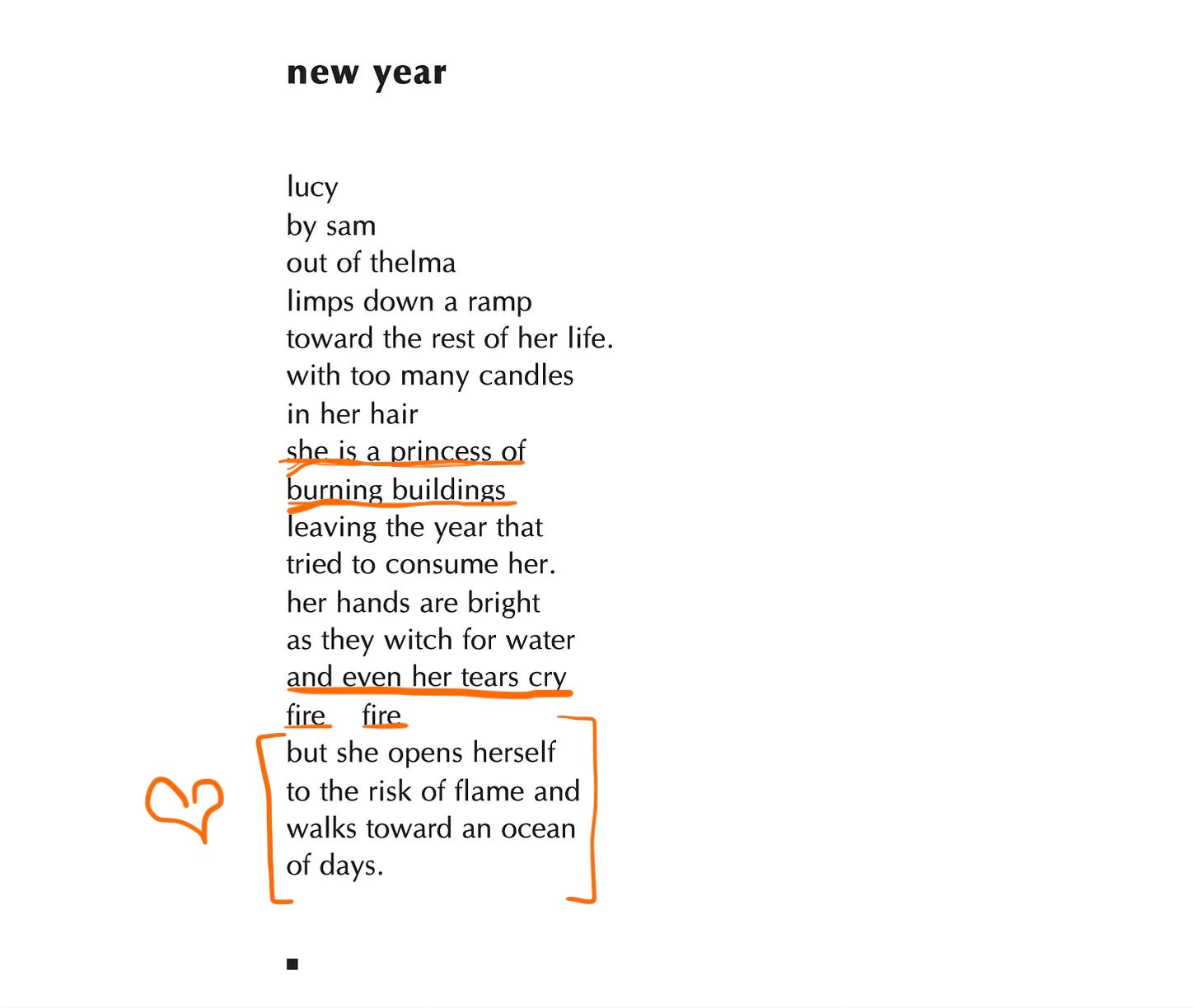Ever since I wrote the Marielle, Presente! & E x p a n s i o n of Fire Passage piece, fire continues to be an image that rages through my mind. In the context of the two previously mentioned pieces, I discussed the harm that is perpetuated upon Black Women & how the spectacle of fanning the smoke take over rather thang giving us a pail of water.
When I think of fire, it signifies the exploration of rage, clarification, release, & regermination. I think of the duality of a technology that can provide nourishment/warmth & bring about great destruction. In the mini syllabus below, I have curated other places my mind roams when I think of fire.
The Fire Next Time was the second James Baldwin book I read. James’ novel was originally published in 1963 against the ever-present Civil Rights Movement in the United States. The book is a must-read for anyone trying to understand how racial injustice was nurtured & woven into the fabric of the United States so that it may continue today. I also believe it is a good place to start to learn about James’s work if you are looking for an entryway. While the titles of this book notions to fire, I have chosen to include the epigraph that has always stuck with me instead. Besides the text of books, many other components can determine how the reader interacts with the text. Examples of these components include the inclusion of a glossary, table of contents, index, or footnotes. I think epigraphs are quite overlooked regarding what makes a book sing. Epigraphs are intimate whispers of hopes teasing what the rest of the work hopes to do. Epigaphs are the guiding force that signals to the reader come back to me. How beautiful, that sometimes epigraphs are simply citations of other’s text—further signifying that no work is created in a void.

Before the Civil Rights Movement set the U.S. abalaze there was the Civil War. “Paradise Square” is set in New York in 1863 against the backdrop of this war. The musical centers on Black & Irish immigrants who live in the Lower East Side community as they continue living amongst the changes the war is producing. You can read more about the play here. Joaquina Kalukango's perfomed "Let It Burn" (from "Paradise Square") during the 75th Tony Awards which took place on June 12, 2022. That night, she was awarded a Tony Award for Actress in a Leading Role. Here I’m pondering, how even amidst the fire, how do we continue to give ourselves a voice? Lyrics I always return to include:
🩵 “A place you are afraid of, a world you've never known You can take it in a flash, you can burn it down to ash But none of us will go”
🩵 “We’re stronger than your fire, let it burn”
🩵 “But I know that our spirit is bigger than this place”
“Even her tears cried fire”
The poem below is by Lucille Clifton & is annotated by me. I always adore Lucille’s use of language & I used to underline every line of poetry. Now, I try to annotate the words that resonate with my body the most when I read it out loud. I forgot to underline this phrase, but “witch for water” is also such an intentional play of language that sticks with me. With this poem, I’m thinking about what it means to remain open “to the risk of flame” even when you cannot see the ocean of future days along the route you are walking.
“The one thing I’m obsessive about is Jade and I had a pot of jade bush that was about 15 years old. And it was huge and beautiful and it burnt in a snap. Of course I lost manuscripts, books, but the hurt was the report cards. And the hurt was the jade bush.” — Toni Morrison, “I regret everything’ April 20th, 2015 interview, 27:08-27:44
At the time stamp, 22:50-27:44 Terry Gross (the interviewer) ask Toni about a fire that takes place in one of her books, without revealing the title or character as to leave listeners a chance to explore Toni’s discography themselves, & rather half hazzardly transitions into a question about Toni’s own experience with a fire that took place in her own home in 1993. The interviewer quotes Toni’s book excerpt that describes the fire as “it began slowly, gently as it often does,” to set the rough seaway into asking Toni “did your fire begin slowly & gently?” I know, to some extent literary analysis often use the context of a writer’s life to get a better understanding of the text. But this question, that requires Toni to go back & remember a traumatic event seemed to lack the level of care I would’ve wanted to hear form the interviewer. Because Toni is Toni she weaves the personal back into the text in a beautiful way. Still, the impression I get from listening to the interviewer is that the question of the fire that took Toni’s house is prosed because of the intrigue of spectacle. How did they identify the source? Did you have bed bugs? These probing questions seem to be asked to satiate an appetite for ravenous tales that curl like smoke around Black folks in books as well as our lived world.
When Toni reveals that one of her sons was home when the fire started or the hurt of lost report cards & a 15 year old jade bush there was no follow up from Gross regarding the grief fire brings. There was no follow up regarding the hurt fire can cause to sites of memory—people, places, materials. There was no follow up to the hurt of ecological loss, seeing her son walk out of a burning house, or the documents of time no longer preserved. Instead, Gross chose to ask about bedbugs before re-routing to finally ask, “what did you loose in the fire & did it change your relationship to things” (26:26-26:32). While this re-route shows a bit more consideration I think when interacting with folk who have lived through traumatic events we ought to hold space for their experience/loss first rather than our probing curiosities. Ideally, there is no need for a re-route because we allow the person we are in conversation with to shape the bank of the story being told. We don’t shape the bank to break the tale our companion wants to engage & wallow in for a bit longer. To my ear, Gross tried to shape the bank, re-route, and shape again which left me feeling disjointed in where Toni was taking me. Gross’ bank shaping also left me wanting to hear more of what Toni was trying to get at. What are your thoughts?
In 2015, Misty Copeland made history by becoming the first African American Principal Ballet Dancer at American Ballet Theater (ABT) in the 75 years that ABT had existed at the time. Her very first principal role was as the Firebird in the Firebird ballet. The image of Misty in her glowing red & orange costume is one I think of often. I am someone who has participated & loved classical art forms that have not always loved me back. Seeing Misty become the Firebird nurtured the little Black girl in me who loves ballet. The bight red costume, the glowing spiral filled head piece, & the angular eye makeup make the picture even more striking. I don’t remember feeling a fondness or embracing the color red until I saw this costume. The music of Firebird was composed by Igor Stravinsky & is the foundation for the ballet.
Additionally, I also find my mind going back to when Maria Tallchief, the United States’ first prima ballerina who was also an Indigenous Osage Woman, danced in George Balanchine’s version of Firebird. While I have many thoughts on George Balanchine, what I can appreciate about this video is when Maria said that Balanchine’s teaching was about “how to react & to become this poetry” (0:50-1:03). This specific language that Maria used exemplifies perhaps what is one of the goals of crafting an assemblage of my life is. You can enjoy Maia recall her experience as the Firebird in the additional source video below.
Misty dancing in Firebird, inspired thousands of people of color to step foot in a space they never saw themselves represented before. As I write this, especially since records are rapidly disappearing from the web, I want the record to reflect that academic & art institutions are being gutted. While I have never fully trusted institutions this move is not one to be taken likely. Regardless of if a poet resides in academia or relies on institutions to sustain their work (a dangerous state of precarity) one thing remains true for them. That is the fact that if you can control the artists you can control, or severely limit, the dimensionality of the human spirit expressed through art in all its forms. First they kill the poet, & the dream of a just world falls shortly after (at least that is the intention). However, the poets’ poems, songs, & movements serve as their own manifestos situated in the present while conjuring a future we can almost touch. I’m thinking of Gilberto Gil being exiled from Brasil during the dictatorship of the 1970s. I’m thinking of Refaat Alareer. I’m thinking of every Poet who decided to no longer cower in silence & was punished for it.
“James Baldwin wrote that “the poets (by which I mean all artists) are finally the only people who know the truth about us. Soldiers don’t. Statesmen don’t. Union leaders don’t. Only poets.” — an excerpt from a piece written by me entitled I Look to the Poets
How does one make their art & very being uncontrollable? How does one become poetry, to give yourself & others a voice? I have strung these words & gathered these sources to say, if you are a poet (following the definition James provided in the quote above), then share your work to leave a record that spirit is alive & well. Regardless of if institutions are funding us or the burning world seems to offer no signs of relief, there is a wealth of knowledge & beauty moving us from within. I want to see how the Firebird moves, how we emerge from the years that will try to consume us, & how we become irresistibly daring in order to move forward.
If you enjoyed connecting the dots of this blazing trail then I invite you enroll in The Clearing to explore the topic more fully & access the full Fire Quilted Syllabus! Within The Clearing, we claim our unruly & wild imagination through the process of vernacular citational practice & study. The first Clearing Ceremony within The Clearing by Assemblage Conservatory will be Sunday, June 1st, 2025. In this upcoming Clearing Ceremony I will be facilitating a close looking/discussion of the Assemblage Definition & Black Women x Rest Quilted Syllabi. This is also the space for unruly folks to bring their reflection, questions, or observations from the guided prompts in The Clearing Library to discuss them with others. We will challenge definitive theory & of course open up conversation about how to metabolize it. To receive an invitation to The Clearing Ceremony you must enroll in The Clearing prior to June 1st, 2025. Feel free to share the flyer below & this piece with fellow unruly folks in your community. I hope to see you from within The Clearing!

Please remember if you choose to quote this piece, share this piece, or any piece on this publication to always CITE BLACK WOMEN. Please always include my name (Kay Brown she/her pronouns) and a link to the publication of the Assemblage: Baby’s Breath substack in your sharing practice.
To further support my writing practice please consider becoming a paid subscriber.
Lastly, remember that referrals are now available! This means you get to speak the name Assemblage: Baby’s Breath out loud to your community while receiving unique grounded gathered gifts from me. Thank you for being here 💙.







